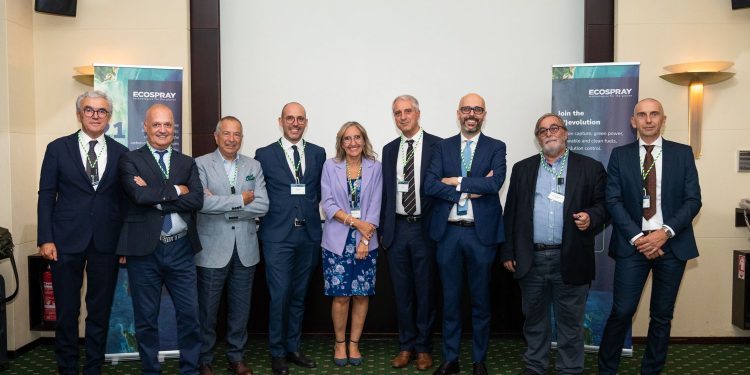Ecospray announced, the finalization of its first two Carbon Capture technologies for the maritime sector, which will be available on the market as of Q1 2024 and will enable the capture of up to 80% of the CO2 emitted during ship operation in specific conditions.
According to the company, after the testing of two technologies in the Ecospray testing facility, the pilot plant was installed on a commercial ship for about 2 months to test the solutions under real conditions. The objectives of the testing phase were largely achieved with capture efficiencies of up to 80%.
Carbon Capture with Amines
As explained, this technology is based on the chemical absorption of CO2 using an amine solution. The pilot plant confirmed the feasibility of the process developed by Ecospray, which differs significantly from the conventional process used for land applications. The new system is easy to apply in the marine sector and guarantees energy savings of at least 10-15%, compared with the conventional high-temperature regeneration process.
Carbon Capture with Calcium Hydroxide
In this case, the CO2 reacts with lime milk. The carbon dioxide is then “converted” into calcium carbonate, a solid material. Very high levels (90-95%) of reagent conversion were achieved in the testing phase of the technology, which confirms a very advanced process optimisation.
Ecospray is also developing a third technology involving CO2 capture with molten carbonate fuel cells (MCFCs). This solution is at the heart of the CapLab, the joint laboratory of Ecospray and University of Genoa. The industrialization phase for this technology should start in 2025.
Carbon Capture technologies can contribute significantly to achieving the ‘zero emissions of CO2’ goal by 2050 in the shipping sector.
..said Filippo Lossani, Director B.U. Marine, Ecospray.
Our systems will enable current ships to significantly reduce emissions and fall well within the current IMO CO2 reduction parameters. We have decided to develop different solutions to be able to adapt them to different contexts.
Mr. Lossani added.































































